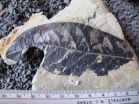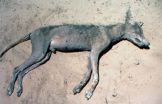The issue contains 35 articles grouped into sections that highlight different aspects of the JCSG high-throughput structural biology pipeline. Context and independent analysis for the specific topics and groups of JCSG papers is provided by overviews written by a well-known expert in the field. The JCSG special issue can be found at http://journals.iucr.org/f/issues/2010/10/00/issconts.html.
"This special issue marks a milestone for the journal and possibly for the JCSG," says Manfred Weiss, section editor of Acta Crystallographica F and a scientist at Helmholtz-Zentrum in Berlin. "Since the advent of structural genomics, there has been a publication bottleneck, and with now over 5,000 structures solved from the National Institutes of Health (NIH) Protein Structure Initiative (PSI) alone, this problem is becoming ever more serious. This special issue is an attempt to help solve this publication problem."
The JCSG, which conducts research to describe the three-dimensional structures of proteins, is led by Ian A. Wilson, who is Hansen Professor of Structural Biology and member of the Skaggs Institute for Chemical Biology at Scripps Research. Wilson explains that the center was formed after a series of informal and formal meetings in 1999 with Scripps Research investigators and other leading scientists in the field who saw a need to spearhead efforts to explore and develop high-throughput structural biology.
"The consortium was initially conceptualized by a group that included John Wooley and Susan Taylor at University of California San Diego (UCSD), Ray Stevens at Scripps, Keith Hodgson and Peter Kuhn at Stanford Synchrotron Radiation Lightsource (SSRL), and Scott Lesley and Pete Schultz at the Genomics Institute of Novartis Research Foundation (GNF)," Wilson said. "The timing was right for us to establish this center—the NIH Protein Structure Initiative was about to begin in 2000. We were one of seven centers that were awarded pilot grants that year through the NIH-PSI to investigate whether high-throughput biology, which was termed structural genomics, was even feasible."
Structural genomics employs typical structure determination methods of X-ray crystallography and nuclear magnetic resonance (NMR), but required building high-throughput pipelines to go from gene to structure. The first step was to construct such a pipeline using sophisticated automation and parallel processing so that almost every stage in the process could be optimized for throughput from target selection, protein production, and crystallization to structure determination. In that way, large numbers of target proteins could be tackled at one time, which enabled the JCSG and other high-throughput centers to capitalize on the opportunities afforded by the genome sequencing centers that were starting to release a deluge of genome sequencing data from bacteria to human at an every increasing rate. Hence, structural genomics emerged in part to address the challenge and opportunity to convert the gene sequences into three-dimensional structures.
The JCSG consortium comprises scientists at Scripps Research, UCSD, SSRL, GNF, and Sanford-Burnham Medical Research Institute.
Wooley, associate vice chancellor of research at UCSD, says that this special issue of Acta Crystallographica demonstrates the maturation of the large-scale collaboration among these five institutions. "The path has not been easy and would not have been, as they say, for the faint hearted," Wooley said. "These institutions have been able to sustain a deep level of engagement and provide a framework for vigorous and rigorous advances in our understanding of protein structure-function relationships and the nature of the protein universe."
Understanding protein structure-function relationships, he added, is central to understanding the machinery of life—how protein complexes function in health and what goes wrong in disease.
The JCSG—Past, Present, and Future
Wilson says that the JCSG's initial goal was to build a pipeline to explore the feasibility of applying high-throughput methods to structural biology and then see just how many structures could be could actually be solved in any given year.
"Our high-throughput structural genomic pipeline started modestly in the initial exploration phase of the PSI-1 (2000-2005), but has solved more than 200 novel structures a year for the past three years in a row in PSI-2 (2005-2010)—an unthinkable feat at the onset of this project—and more than 1,150 structures to date," Wilson said. "The vast majority of these structures have been solved by X-ray crystallography, but NMR is now playing an important role in tacking certain classes of proteins due to Professor Kurt Wüthrich and his team at Scripps Research joining the JCSG in the latter part of PSI-1."
Wilson adds that processing such large numbers of targets and enormous amounts of associated data has resulted in the development of new technologies and methodologies that facilitate high-throughput structural genomics and push the frontiers of structural biology. "These new technologies, when feasible, have been converted to free-access, web-based tools and applications that include XtalPred, Structure Validation, and Ligand Database servers, and the TOPSAN annotation portal," Wilson said. TOPSAN, The Open Protein Structure Annotation Network, is a web-based platform developed to collect, share, and distribute information about protein three-dimensional structures.
Scott Lesley, director of Protein Sciences at GNF, adds that many of the tools developed in the Protein Structure Initiative have found their way into mainstream structural biology as well. "Everything from certain molecular biology techniques, to parallel expression approaches, to protein characterization methods, to target optimization, to microcrystallization techniques were developed or optimized within the past decade of the PSI," he said. "The JCSG has now entered a very exciting phase where we are able to apply our pipeline to challenging biological systems and to be able to work closely with partners in biology."
Wilson says the special issue of the structural biology journal represents only a snapshot of some of the plethora of successful projects from the center's inception to the present, and isn't meant to be comprehensive.
"It's an overview of some of the exciting progress and interesting findings that have happened in the center so far," he noted, turning the discussion to the future of the JCSG. Supported by a recent five-year NIH grant totaling $37.6 million, the consortium will continue to operate its pipeline for high-throughput structure determination. Structures that the group plans to tackle over the next five years include targets from challenging systems, such as T cells and stem cells, and will include eukaryotic proteins, protein-protein, protein-RNA, protein-DNA, and other complexes, in addition to continued effort to extend structural coverage of the "protein universe."
One theme of the center's research will explore the human "microbiome," the collection of microbes that inhabit specific environments, such as the human digestive tract. "Interactions of bacteria with the human body are profound and have a significant impact on maintenance of general human health," says Wilson. "In addition, they are associated with obesity, inflammatory diseases, diabetes, and certain cancers."
Stevens summarizes the work of the center so far. "The breakthroughs in genomic sequencing have delivered a flood of valuable biological data to the scientific community," he said. "This data needs to be translated into useful information such as what the protein products look like, how they work, and how they work together in the living cell. By providing protein structures in a more rapid and reliable manner, we are increasing our understanding of the fundamental principles of life."
### About The Scripps Research Institute
The Scripps Research Institute is one of the world's largest independent, non-profit biomedical research organizations, at the forefront of basic biomedical science that seeks to comprehend the most fundamental processes of life. Scripps Research is internationally recognized for its discoveries in immunology, molecular and cellular biology, chemistry, neurosciences, autoimmune, cardiovascular, and infectious diseases, and synthetic vaccine development. An institution that evolved from the Scripps Metabolic Clinic founded by philanthropist Ellen Browning Scripps in 1924, Scripps Research currently employs approximately 3,000 scientists, postdoctoral fellows, scientific and other technicians, doctoral degree graduate students, and administrative and technical support personnel. Headquartered in La Jolla, California, the institute also includes Scripps Florida, whose researchers focus on basic biomedical science, drug discovery, and technology development. Scripps Florida is located in Jupiter, Florida. For more information, see www.scripps.edu
END



